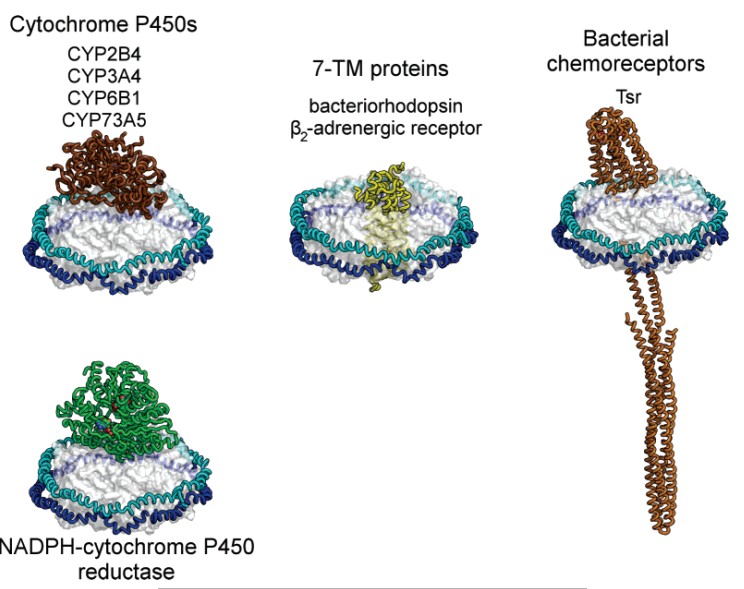Mempro™ Membrane Proteins Reconstituted in Nanodisc
Creative Biostructure has developed an advanced Mempro™ Nanodisc technogy platform for a long time. we can provide tailored Mempro™ membrane proteins reconstituted in Nanodisc srevices for you.
In most cases, membrane proteins are modulated by the phospholipid that forms the membrane and they have presented a challenge to functional and biochemical researches for a long time. In the conditions without a bilayer, individual proteins and pivotal macromolecular complexes are possibly insoluble and display altered or absent activities. The rebuild of membrane proteins into Nanodiscs can make studies of individual characteristics and activities of cell membrane components achieved. Nanodiscs are soluble nanoscale phospholipid bilayers, which are encircled and stabilized by membrane scaffold proteins (MSP) deriving from human serum apolipoprotein A1. One of the biggest advantages of using nanodiscs is that allowing membrane proteins in aqueous solution, in native-like phospholipid bilayer state which is stable, soluble, monodisperse and detergent-free.
 Figure 1. Membrane proteins that have been incorporated into Nanodiscs include CYPs, CPR, 7-TM proteins, and bacterial chemoreceptors. (Biochemistry 2007)
Figure 1. Membrane proteins that have been incorporated into Nanodiscs include CYPs, CPR, 7-TM proteins, and bacterial chemoreceptors. (Biochemistry 2007)
- Membrane Protein Production in Nanodisc
Membrane Proteins play important roles in several biological pathways and represent crucial drug targets. However, there are some difficulties in the development of membrane protein, such as it’s hard to get sufficient quantities of membrane protein of interest and incorporate them into a lipid state in functional form. Nanodiscs enable to maintain membrane proteins in solution, and offer an inartificial phospholipid bilayer environment in which the incorporated target keeps stable. They present a great advantage for the isolation, purification, functional characterization and structural resolution of membrane proteins.
- Detergent-solubilized System for Membrane Protein Production in Nanodisc
Detergents are usual tools in membrane protein study, however, at present their use are aposteriori. Solubilization is the consequence of a balance between two arguments: the energy related to padding the void in the center of the resultant mixed micelle and the energy related to tortuosity of phospholipid monolayers into a curved micellar surface. Our team can provide high quality membrane protein production in Nanodisc services with Mempro™ detergent-solubilized system.
- Cell-free System for Membrane Protein Production in Nanodisc
Cell-free (CF) expression system has turned into an ordinary technique for the production of membrane proteins, either from prokaryotic or eukaryotic origin. In contrast to the common cell-based expression, CF expression system has numerous advantages, for example, it enables to synthesis of toxic proteins, observably simplify synthesis of the selectively labeled proteins for their structural and biochemical studies, allow a direct accretion of the agents or co-factors to the reaction mixture and so on.
Creative Biostructure provides other various Mempro™ Nanodisc technology services. Please feel free to contact us for a detailed quote.
References:
Inagaki S, Ghirlando R, Grisshammer R. Biophysical characterization of membrane proteins in nanodiscs[J]. Methods, 2013, 59(3): 287-300.
Shen H H, Lithgow T, Martin L. Reconstitution of membrane proteins into model membranes: seeking better ways to retain protein activities[J]. International journal of molecular sciences, 2013, 14(1): 1589-1607.
Denisov I G, Sligar S G. Nanodiscs for structural and functional studies of membrane proteins[J]. Nature structural & molecular biology, 2016, 23(6): 481-486.